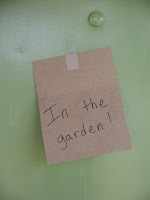 The design for our urban landscape is based on the food forest concept stemming from permaculture principles. One of the several important aspects of designing a food forest means utilizing “layers” in the garden. Here are those layers:
The design for our urban landscape is based on the food forest concept stemming from permaculture principles. One of the several important aspects of designing a food forest means utilizing “layers” in the garden. Here are those layers:
- The canopy (large trees)
- Low tree layer (dwarf fruit trees)
- Shrubs
- Herbaceous
- Rhizosphere (root crops)
- Soil Surface (cover crops)
- Vertical Layer (climbers, vines)
Last year I focused on the first, second and third layers. The 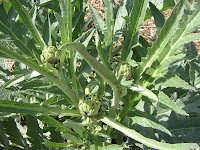 property we moved into already has some wonderful existing large trees, so I didn’t focus on adding too much there. I did bring in tons of dwarf fruit trees: pears, cherries, fig, autumn olives, bay leaf. For the shrub layer, I added goumi bushes, currants, blueberries, raspberries, artichokes. I was more than pleased with the garden last year, but recognized there was lot of work left to be done.
property we moved into already has some wonderful existing large trees, so I didn’t focus on adding too much there. I did bring in tons of dwarf fruit trees: pears, cherries, fig, autumn olives, bay leaf. For the shrub layer, I added goumi bushes, currants, blueberries, raspberries, artichokes. I was more than pleased with the garden last year, but recognized there was lot of work left to be done.
This year has proven even better, and it’s barely June! Those trees and shrubs from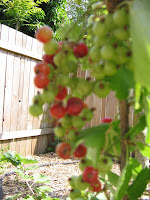 last year are all now well-established and actually earning their keep. I see several goumi berries on the shrubs and cherries on the trees. Artichokes are developing out of every bush. I even had red currants ripe for munching as I worked outside this weekend. Finally, it’s starting to pay off.
last year are all now well-established and actually earning their keep. I see several goumi berries on the shrubs and cherries on the trees. Artichokes are developing out of every bush. I even had red currants ripe for munching as I worked outside this weekend. Finally, it’s starting to pay off.
I have moved onto filling out these layers with some more additions (persimmon tree, flowering dogwood, cornelian cherries, more currants, more raspberries, etc). But primarily my focus has shifted to the additional layers. We now have two herb spirals (#4) and tons of flowering bulbs and jerusalem artichokes planted (#5). Once the patio and pathways are dug out, I plan to work on the ground covers(#6): blue-star creeper, carpet thyme, and corsica mint.
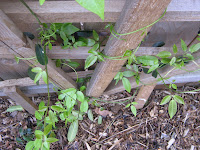 The vine layers (#7) make me feel a little behind. I was smart enough to get them in the ground this winter, but now they are all awake and ready to climb. The biggest structure to support them was the pergola, which the hardy kiwis are happily climbing up. The old bed frame is doing a great job of supporting the grape vines. But I still need to build more smaller trellises for the trumpet vine, porcelain berry, and hops… I could not have picked a better plant to assign my earlier trellis to a couple months back, as the china blue vine is a more vigorous grower than I expected. A pleasant surprise, indeed.
The vine layers (#7) make me feel a little behind. I was smart enough to get them in the ground this winter, but now they are all awake and ready to climb. The biggest structure to support them was the pergola, which the hardy kiwis are happily climbing up. The old bed frame is doing a great job of supporting the grape vines. But I still need to build more smaller trellises for the trumpet vine, porcelain berry, and hops… I could not have picked a better plant to assign my earlier trellis to a couple months back, as the china blue vine is a more vigorous grower than I expected. A pleasant surprise, indeed.
I am so happy to see everything coming in relatively as planned. It’s one thing to sit down and draw out a well-thought design. It’s another thing to be able to bring food to the table so early in the season from your own backyard. Today, I feel really proud of what I’ve created.

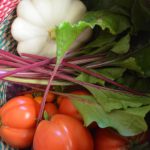
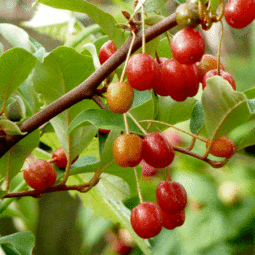
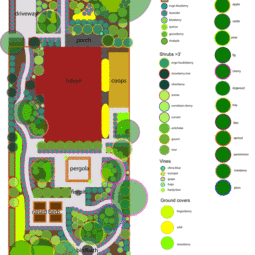
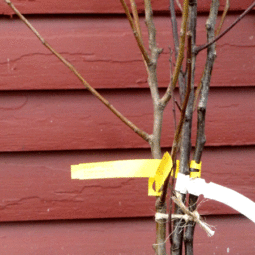
 Upgrade your hanging basket game!
Upgrade your hanging basket game!  Here’s
Here’s

 This cluster was about the siz
This cluster was about the siz



 I start with a
I start with a


So you should feel proud Clogs, WTG! Time is going to continue to provide more for your wonderful garden
Blessings:)
Hello,
I’m wondering if you might be able to suggest a good book on permaculture? I’ve been reading a few lately, but I’m really after a book that has good instructions for elements such as Mandala beds and keyhole beds- any suggestions as to which of the many books would be a good one to buy and add to my library?
Hi Tessa, I have found Gaia’s Garden to be the best permaculture book for home-scale gardens. It is also one of the more specific in terms of planting suggestions. I am hoping to see even more titles come out over the next few years though that get specific, as this is an emerging practice for our urban homesteads.
You should be very proud, you have a beautiful backyard system!